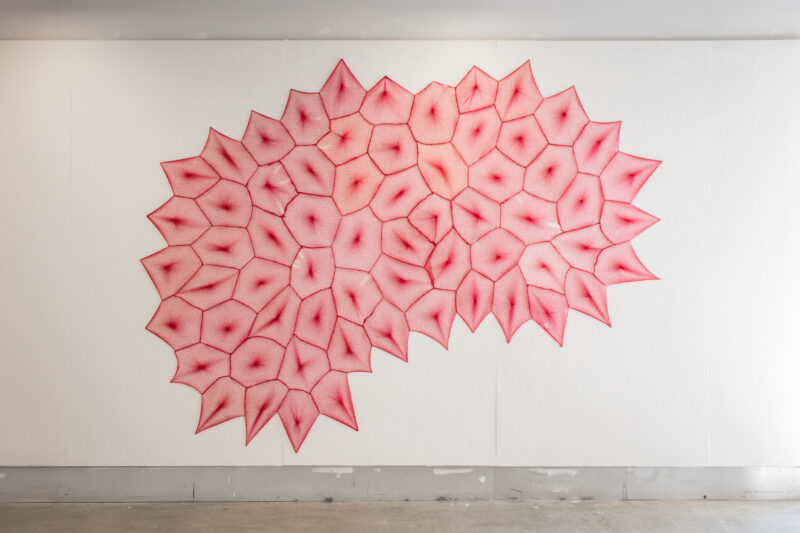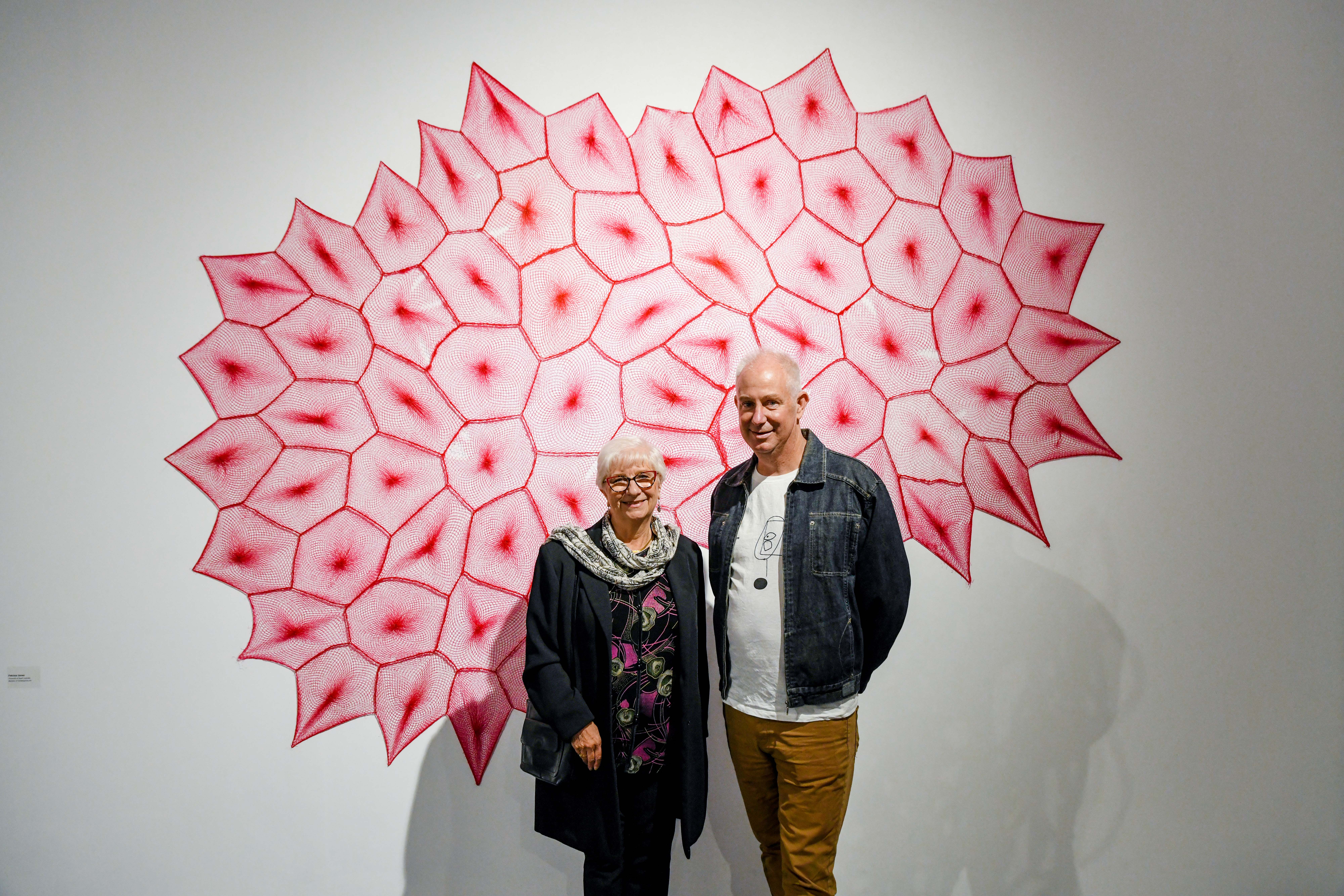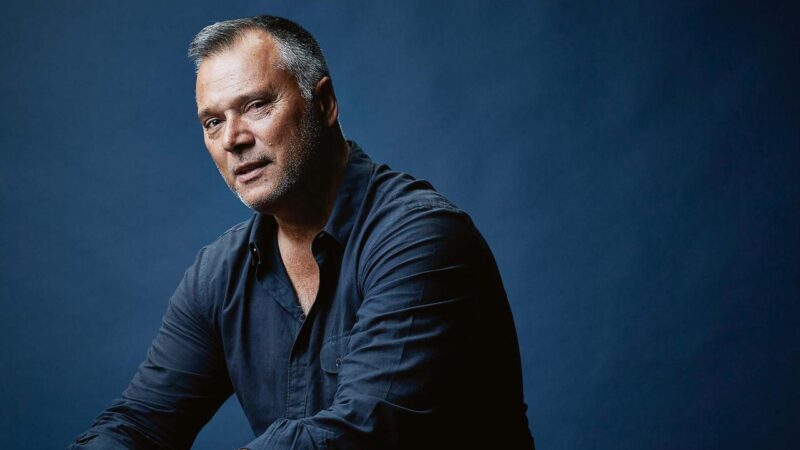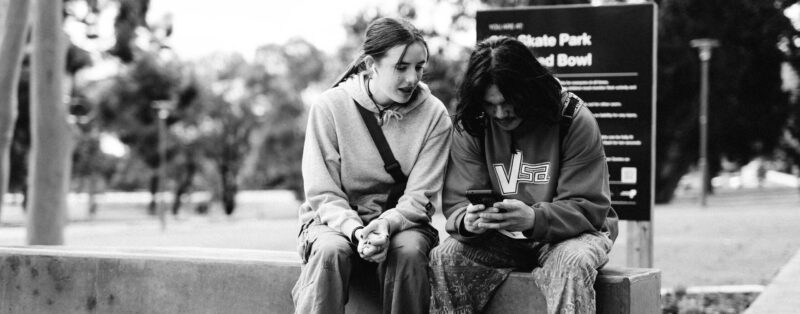Sculpture artist Patricia Jones is breathing new life into discarded materials
In April 2023, emerging sculpture artist Patricia Jones joined 20 visual artists from Flinders University and the University of South Australia at the Helpmann Academy Graduate Exhibition – an annual showing of the strongest emerging creative voices from South Australia’s contemporary art scene.
Patricia’s work ReBORN uses discarded waste materials, like mesh produce bags and wine corks, and breathes new life into them. In her artist statement Patricia states that her aim is “to challenge people to think before discarding unwanted items which contribute to landfill and consider other uses to which they were originally designed.”
Square Holes have partnered with the Helpmann Academy since 2016 to provide insight into the evolving needs of emerging creatives in South Australia. In 2022 Square Holes further established this important partnership by joining the organisation as an award donor, debuting the Square Holes Award at the Helpmann Academy Graduate Exhibition in February 2022. We have continued the patronage of this award in the new year, with emerging illustrator and Flinders University graduate Erin Renfrey taking out the award in 2023.
Our managing director Jason Dunstone was so captivated by Patricia’s ReBORN mesh work that he purchased it on the opening night of the exhibition, to have it installed in the Square Hole’s office, alongside Erin’s Intergalactic Friendships of the Future.
Of his long-term support of the arts, Jason says, “To me, emerging artists, create new pieces that are critical in telling our stories and play a fundamental role in society that is worthy of support. Helping new and emerging artists as they leave university and face at least a few years of challenge as they try to turn their talent into a sustainable career is so important. It is always a shame when societies basically kill the creative ambition of the next generation of artists by simply not giving a level of endorsement and confidence.”
To celebrate the installation of Patricia’s work into Square Holes, we sat down with the artist to talk about social change through art, collecting and following your dreams later in life.
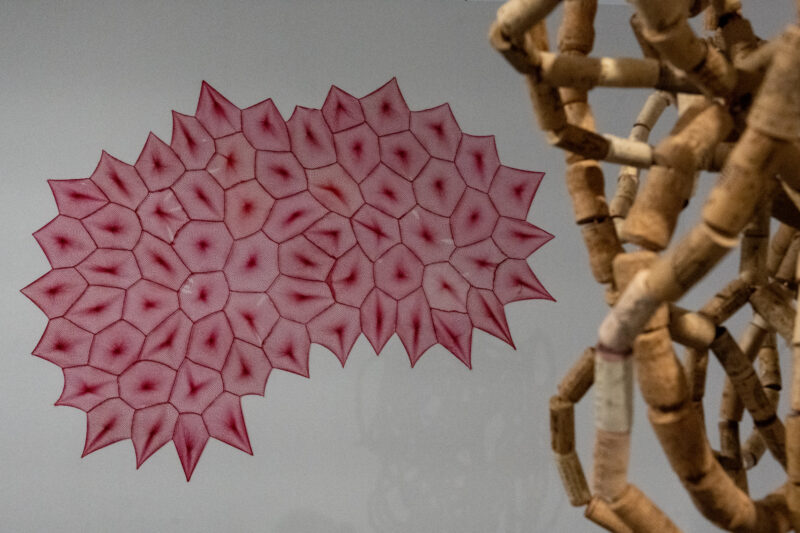
Square Holes: I read that you started in illustration and painting but have since moved into sculpture. What prompted this transition and what drew you to sculpture as an outlet?
Patricia: I guess when I started my degree, which I took 12 years to complete, I wanted to expose myself to as many disciplines as possible. And the opportunity to do a course called the Sculptural Object came up. I noticed in my very first foundation course back in 2011, (Australian sculpture artist) Louise Haselton was running the course then, and she described how she came into art as a painter and then moved into sculpture. And I was fascinated by her perspective on the concept of animism. I thought it was a bit of a kooky idea, but it was rather fun to think objects could endear themselves to you, and you could perhaps see something beyond what was just the physical form. That was something that stayed with me right through my course.
When I started the sculptural object, my chosen material was net. I had a big old fishing net. So, for my first assignment, I created a work where I draped it on suspension points to make a beautiful cascading shape. It just really excited me to see how net could be formed by where you suspended it, how you suspended it, how much tension you put on it, and how much you allowed it to just do its own thing.
I’m a bit of a magpie, with a large collection of things, and one of them was this incredible selection of mesh bags from fresh produce. And I just thought, this is the time I need to do something with these.
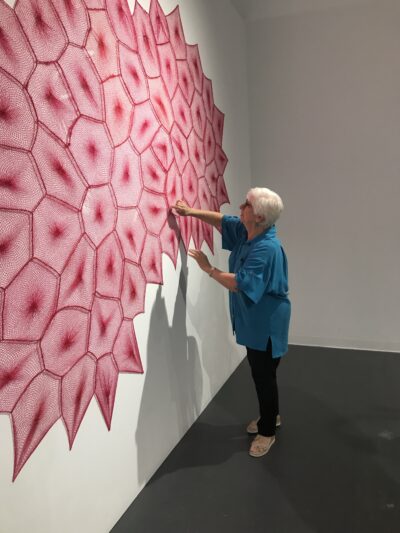
SH: Where do you think this urge to collect comes from?
P: I have no idea! I mean, if you saw the things that I have here, I’ve got masses of shiny lolly wrappers, and that’s because I love shiny things. I think I can’t throw something out if I could perhaps use it for something. And that’s been in me for the last 20 years or so.
SH: Is it that you’re always looking at these things and thinking of how you can create art with it? Or is it more about repurposing it from what it was before into some other useful thing?
P: I think it’s more an art focus. I do a bit of repurposing, but I just like to make things out of other things that are really just arty. My focus is more the ethereal, the visual expression of beauty that the item has. It’s not so much to find the function of a thing, but the possibilities beyond what its function actually was.
SH: I mean, I would also argue that art is very useful too.
P: It fulfills a need on a different level. It’s not just a practical thing. It’s an emotional thing and it does an awful lot for people’s attitudes and mental states. I think it gives you a trip out of reality and moves you into another dimension for a short while. And that’s where I think the benefit of art is to society. It’s to enrich us on an emotional level.
SH: You have said that you hope your work inspires people to look at the way they consume and think about other uses for commonplace packaging. Do you think art’s role is to bring about social change as well?
P: Oh, definitely. We’ve got such a terrible problem with waste in the world. Not just Australia, but everywhere. And there have been a lot of artists in the last 50 odd years who’ve tried to get people to view waste in a different way. They’re addressing social messages, some of them in a very dramatic way. And I don’t know if everybody thinks the same way as me, but you don’t just look at what it (the artwork) is, you look at what it represents, what stories it might tell you beyond, and what you can think about in your own life. I think there’s a huge social message in art, and it’s incredibly important. And if we can use recycled materials to tell that story, to prompt that thinking, I think that’s tremendously exciting.
You don’t do art with the purpose of who’s going to like this? Where’s it going to take me? You just do it because you feel you need to do it. It’s an inner drive, a compulsion.
SH: You’ve touched on a few of the themes that you explore in your work, but what do you feel are the main kind of messages that you are trying to explore?
P: I like to take something mundane, something possibly unwanted, and make it appealing, try and find its inner beauty. This animism thing that I picked up from Louise Haselton. I look at something and I think, ‘what’s your inner beauty?’ It was that with the mesh bags. It’s a remarkable material. It’s strong, but light, highly portable, and comes in a range of vivid colours and textures. You’ve got different forms of mesh. Some of them are stiff and some of them are soft. The ones I’ve used in the work that is in your office are softer ones. And I chose them because they are malleable. They are so soft, and yet they’ve got that strength. It’s an absolutely remarkable material. And it deserves to have a new life.
SH: How does it feel for you to have your work purchased by Square Holes at the 2023 Helpmann Academy Graduate Exhibition?
P: It’s a dream come true. I hadn’t expected anything. It just sort of snowballed from when Helpmann first selected the work and then the process of going through moving it and seeing it on the cover of the catalogue and the adverts. It’s the most amazing thing that’s ever happened to me. And I don’t think I will ever, on an artistic level, achieve that kind of a high again. I mean, as you get older, you don’t expect these amazing things to happen.
There’s not a lot of help for young artists really, and to have an organization like Helpmann, it’s an incredible jumping off point for people to branch into a commercial arts career.
SH: It’s especially amazing to see so many mature aged women coming into the field, after feeling like there wasn’t space for them.
P: Absolutely. I couldn’t follow art as a career, because in my day women didn’t do that kind of thing, you know? So, I moved into more of an administrative, secretarial kind of direction because it was a matter of earning a living – and artists are not renowned for earning a living. Unless you’re dead (laugh).
But, throughout the years I would find myself sitting and drawing just nothing in particular, a doodle that turned into something and making shapes and lines. It’s something that’s been inside me ever since I was a kid. And all through my life, I’ve done art without it being something that I could spend time on beyond just a few minutes here or a few hours there.
And so, studying it when I retired was a dream come true. That is something I did dare to dream. You don’t do art with the purpose of ‘who’s going to like this? Where’s it going to take me?’ You just do it because you feel you need to do it. It’s an inner drive, a compulsion.
Square Holes has partnered with Helpmann Academy to provide insights through market research to evolve and fine tune its output since 2016.
